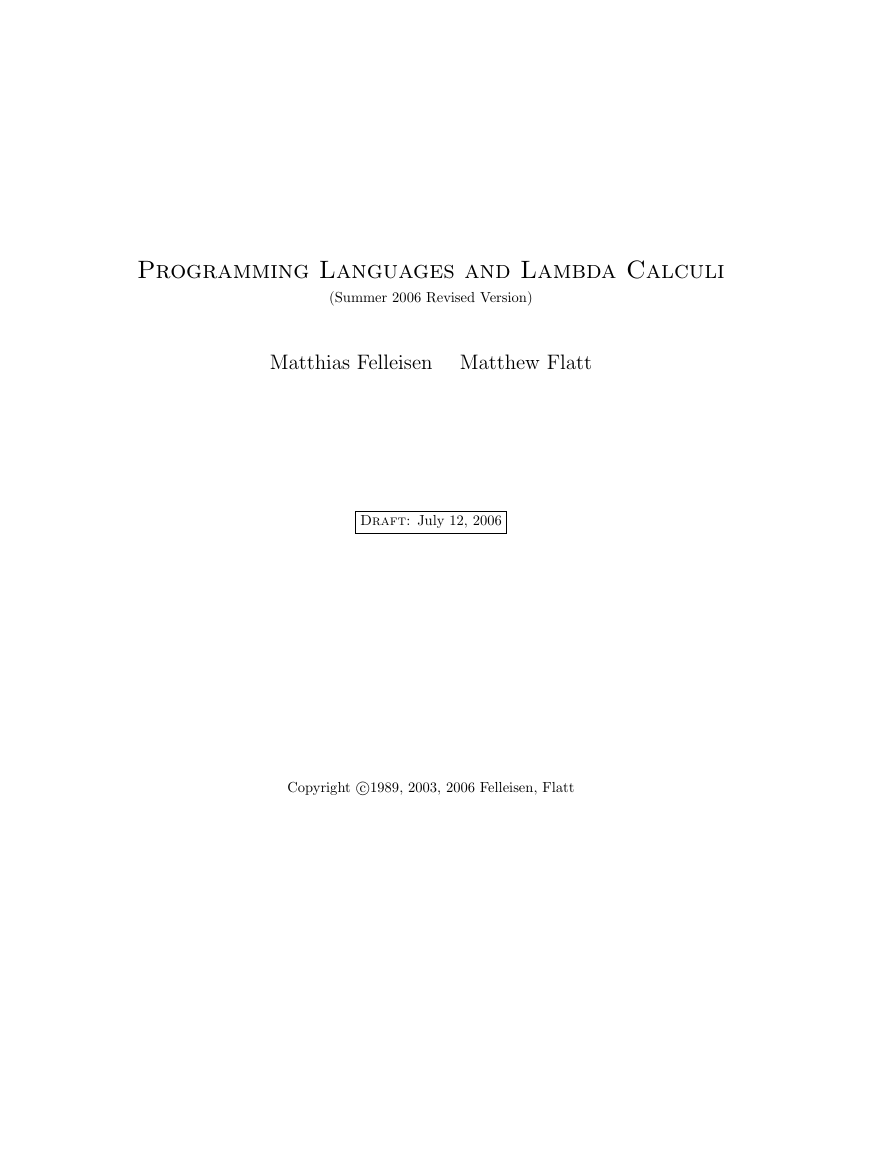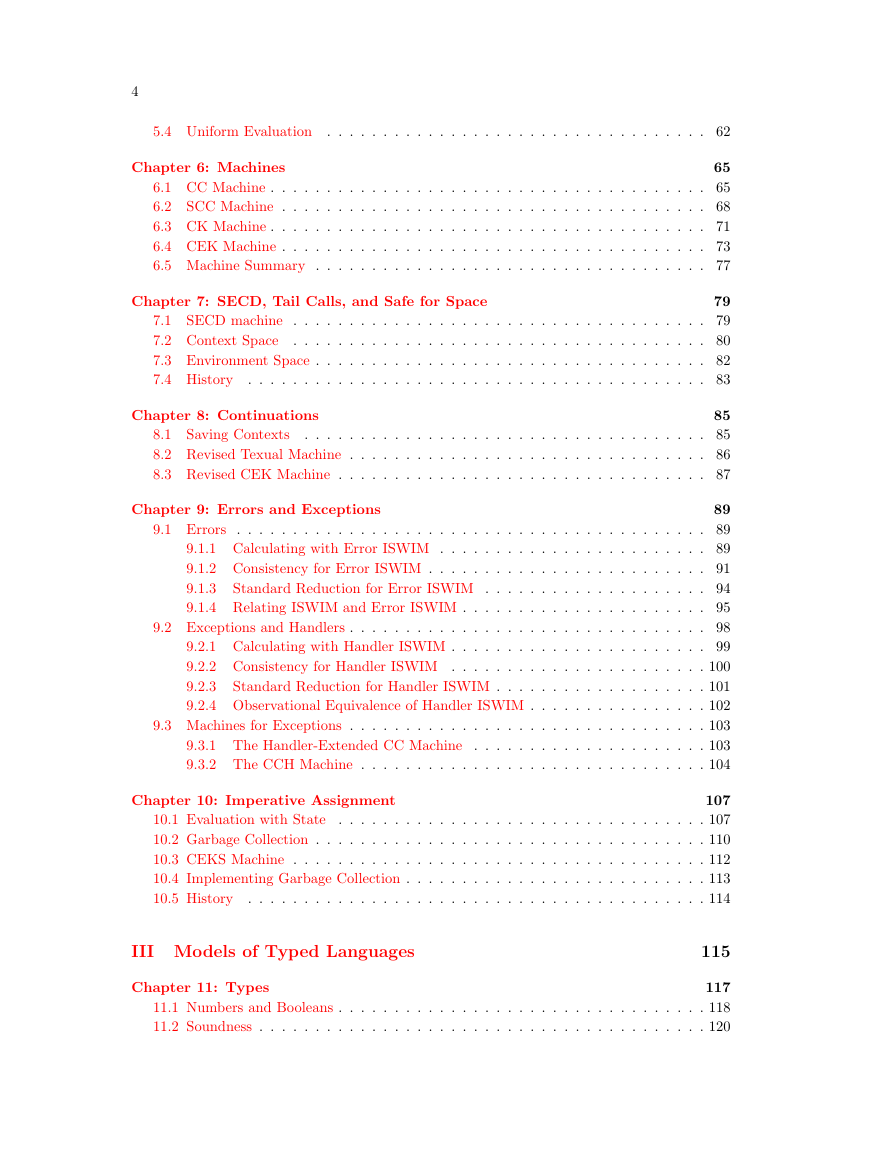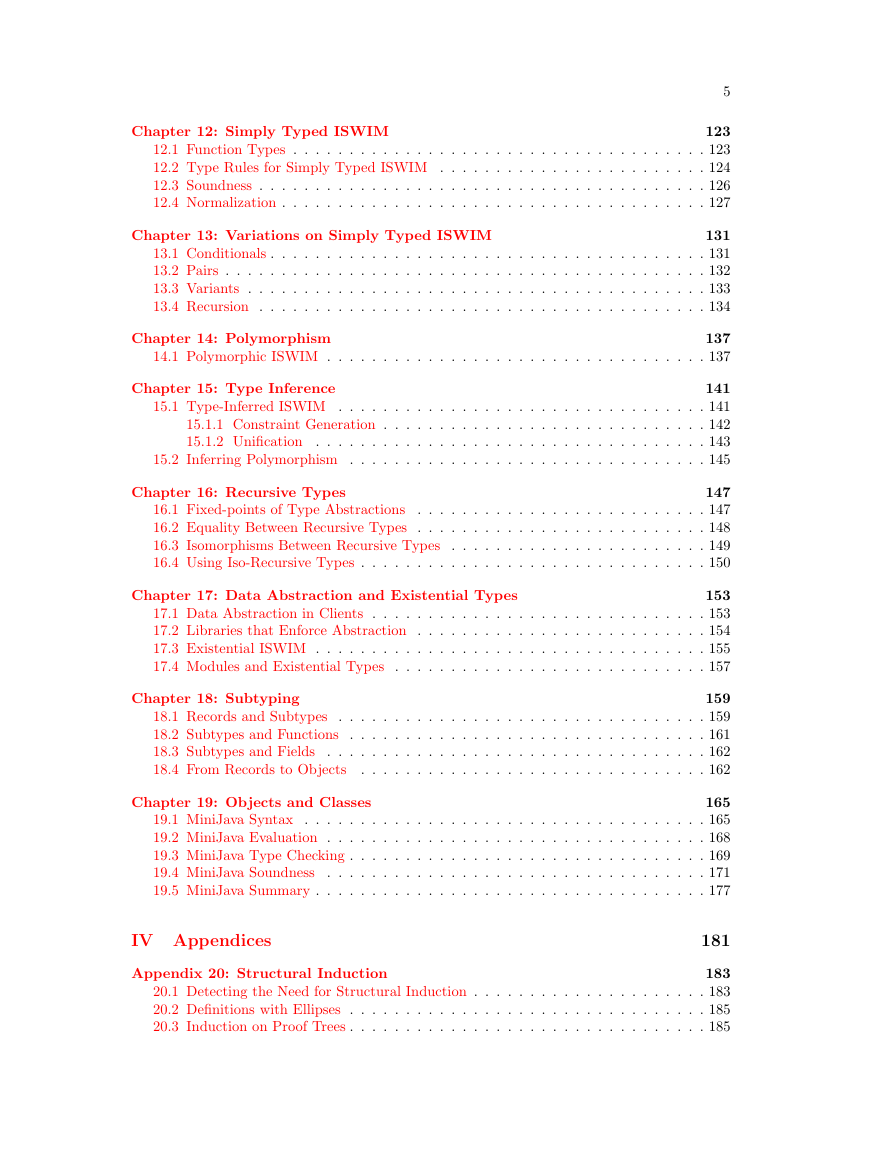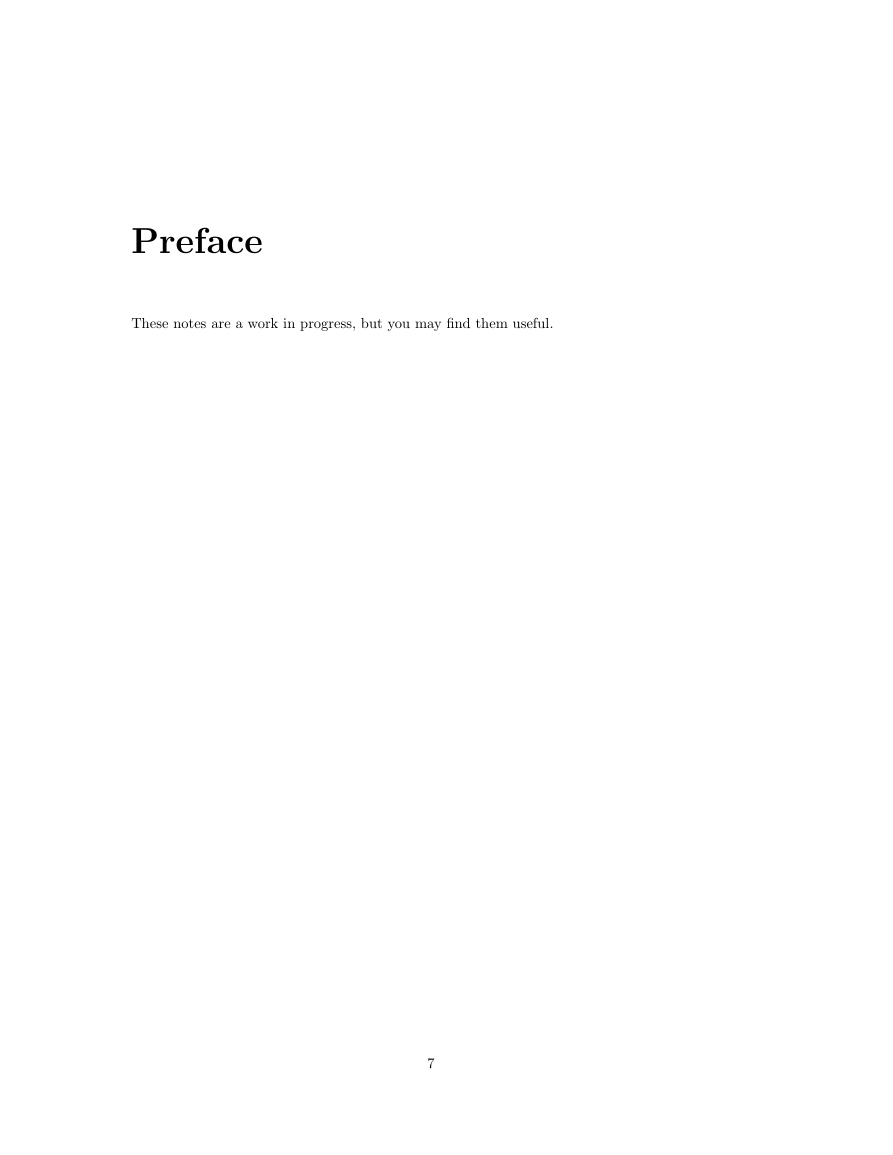I Models of Languages
Chapter 1: Computing with Text
1.1 Defining Sets
1.2 Relations
1.3 Relations as Evaluation
1.4 Directed Evaluation
1.5 Evaluation in Context
1.6 Evaluation Function
1.7 Notation Summary
Chapter 2: Consistency of Evaluation
Chapter 3: The -Calculus
3.1 Functions in the -Calculus
3.2 -Calculus Grammar and Reductions
3.3 Encoding Booleans
3.4 Encoding Pairs
3.5 Encoding Numbers
3.6 Recursion
3.6.1 Recursion via Self-Application
3.6.2 Lifting Out Self-Application
3.6.3 Fixed Points and the Y Combinator
3.7 Reduction Strategy and Normal Form
3.8 History
II Models of Realistic Languages
Chapter 4: ISWIM
4.1 ISWIM Expressions
4.2 ISWIM Reductions
4.3 The Yv Combinator
4.4 Evaluation
4.5 Consistency
4.6 Observational Equivalence
4.7 History
Chapter 5: Standard Reduction
5.1 Standard Reductions
5.2 Proving the Standard Reduction Theorem
5.3 Observational Equivalence
5.4 Uniform Evaluation
Chapter 6: Machines
6.1 CC Machine
6.2 SCC Machine
6.3 CK Machine
6.4 CEK Machine
6.5 Machine Summary
Chapter 7: SECD, Tail Calls, and Safe for Space
7.1 SECD machine
7.2 Context Space
7.3 Environment Space
7.4 History
Chapter 8: Continuations
8.1 Saving Contexts
8.2 Revised Texual Machine
8.3 Revised CEK Machine
Chapter 9: Errors and Exceptions
9.1 Errors
9.1.1 Calculating with Error ISWIM
9.1.2 Consistency for Error ISWIM
9.1.3 Standard Reduction for Error ISWIM
9.1.4 Relating ISWIM and Error ISWIM
9.2 Exceptions and Handlers
9.2.1 Calculating with Handler ISWIM
9.2.2 Consistency for Handler ISWIM
9.2.3 Standard Reduction for Handler ISWIM
9.2.4 Observational Equivalence of Handler ISWIM
9.3 Machines for Exceptions
9.3.1 The Handler-Extended CC Machine
9.3.2 The CCH Machine
Chapter 10: Imperative Assignment
10.1 Evaluation with State
10.2 Garbage Collection
10.3 CEKS Machine
10.4 Implementing Garbage Collection
10.5 History
III Models of Typed Languages
Chapter 11: Types
11.1 Numbers and Booleans
11.2 Soundness
Chapter 12: Simply Typed ISWIM
12.1 Function Types
12.2 Type Rules for Simply Typed ISWIM
12.3 Soundness
12.4 Normalization
Chapter 13: Variations on Simply Typed ISWIM
13.1 Conditionals
13.2 Pairs
13.3 Variants
13.4 Recursion
Chapter 14: Polymorphism
14.1 Polymorphic ISWIM
Chapter 15: Type Inference
15.1 Type-Inferred ISWIM
15.1.1 Constraint Generation
15.1.2 Unification
15.2 Inferring Polymorphism
Chapter 16: Recursive Types
16.1 Fixed-points of Type Abstractions
16.2 Equality Between Recursive Types
16.3 Isomorphisms Between Recursive Types
16.4 Using Iso-Recursive Types
Chapter 17: Data Abstraction and Existential Types
17.1 Data Abstraction in Clients
17.2 Libraries that Enforce Abstraction
17.3 Existential ISWIM
17.4 Modules and Existential Types
Chapter 18: Subtyping
18.1 Records and Subtypes
18.2 Subtypes and Functions
18.3 Subtypes and Fields
18.4 From Records to Objects
Chapter 19: Objects and Classes
19.1 MiniJava Syntax
19.2 MiniJava Evaluation
19.3 MiniJava Type Checking
19.4 MiniJava Soundness
19.5 MiniJava Summary
IV Appendices
Appendix 20: Structural Induction
20.1 Detecting the Need for Structural Induction
20.2 Definitions with Ellipses
20.3 Induction on Proof Trees
20.4 Multiple Structures
20.5 More Definitions and More Proofs
















 2023年江西萍乡中考道德与法治真题及答案.doc
2023年江西萍乡中考道德与法治真题及答案.doc 2012年重庆南川中考生物真题及答案.doc
2012年重庆南川中考生物真题及答案.doc 2013年江西师范大学地理学综合及文艺理论基础考研真题.doc
2013年江西师范大学地理学综合及文艺理论基础考研真题.doc 2020年四川甘孜小升初语文真题及答案I卷.doc
2020年四川甘孜小升初语文真题及答案I卷.doc 2020年注册岩土工程师专业基础考试真题及答案.doc
2020年注册岩土工程师专业基础考试真题及答案.doc 2023-2024学年福建省厦门市九年级上学期数学月考试题及答案.doc
2023-2024学年福建省厦门市九年级上学期数学月考试题及答案.doc 2021-2022学年辽宁省沈阳市大东区九年级上学期语文期末试题及答案.doc
2021-2022学年辽宁省沈阳市大东区九年级上学期语文期末试题及答案.doc 2022-2023学年北京东城区初三第一学期物理期末试卷及答案.doc
2022-2023学年北京东城区初三第一学期物理期末试卷及答案.doc 2018上半年江西教师资格初中地理学科知识与教学能力真题及答案.doc
2018上半年江西教师资格初中地理学科知识与教学能力真题及答案.doc 2012年河北国家公务员申论考试真题及答案-省级.doc
2012年河北国家公务员申论考试真题及答案-省级.doc 2020-2021学年江苏省扬州市江都区邵樊片九年级上学期数学第一次质量检测试题及答案.doc
2020-2021学年江苏省扬州市江都区邵樊片九年级上学期数学第一次质量检测试题及答案.doc 2022下半年黑龙江教师资格证中学综合素质真题及答案.doc
2022下半年黑龙江教师资格证中学综合素质真题及答案.doc